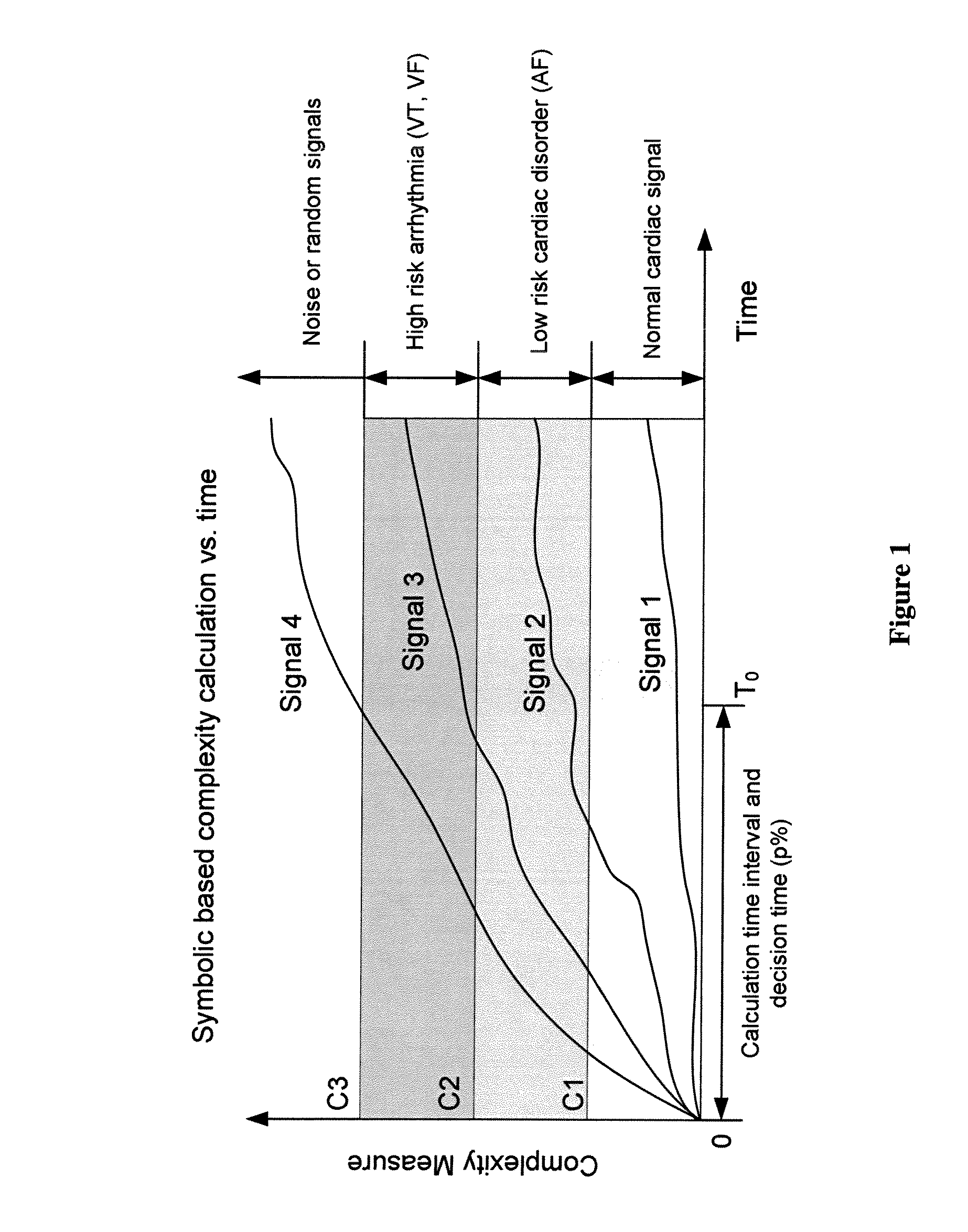Cardiac Arrhythmias Analysis of Electrophysiological Signals Based on Symbolic Dynamics
a symbolic dynamic and arrhythmia technology, applied in the field of system and method for monitoring an identification of cardiac arrhythmias, can solve the problems of inaccurate interpretation and delay in cardiac rhythm management and treatment, subjective and time-consuming waveform morphologies and time domain parameter analysis, and no criteria for intra-cardiac signals and arrhythmia characterization based on signal morphology evaluation or parameter analysis, etc., to improve performance and clinical application, improve the signal noise ratio and accuracy
- Summary
- Abstract
- Description
- Claims
- Application Information
AI Technical Summary
Benefits of technology
Problems solved by technology
Method used
Image
Examples
Embodiment Construction
[0019]Complexity Characterization and Arrhythmia Differentiation
[0020]Cardiac electrophysiological signals analyses, especially surface ECG and intra-cardiac electrograms, are essential to qualitatively and quantitatively test and evaluate heart activity and abnormality. FIG. 1 shows a symbolic dynamics-based complexity calculation and characterization of different cardiac pathologies. For example, the complexity index value of normal cardiac signals is from 0 to C1. Low risk order from C1 to C2, high risk arrhythmia are from C2 to C3, and an index above C3 indicates noise and random signals. To indicates the time length of complexity calculation and decision for cardiac signal characterization with a statistical confidence of p %. For example, the complexity measure C(n) of the signal 1 at time T0 is 01)1 belongs to normal cardiac heart signals. The complexity measurement of the cardiac signals is able to identify and categorize all kind of cardiac arrhythmias. Furthermore, the com...
PUM
 Login to View More
Login to View More Abstract
Description
Claims
Application Information
 Login to View More
Login to View More - R&D
- Intellectual Property
- Life Sciences
- Materials
- Tech Scout
- Unparalleled Data Quality
- Higher Quality Content
- 60% Fewer Hallucinations
Browse by: Latest US Patents, China's latest patents, Technical Efficacy Thesaurus, Application Domain, Technology Topic, Popular Technical Reports.
© 2025 PatSnap. All rights reserved.Legal|Privacy policy|Modern Slavery Act Transparency Statement|Sitemap|About US| Contact US: help@patsnap.com



